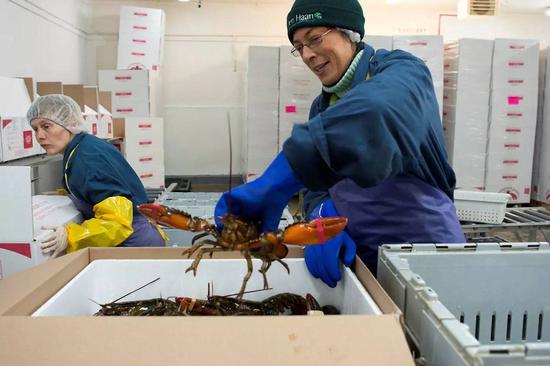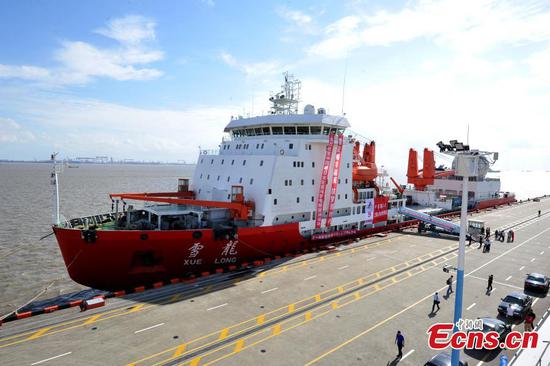
An employee packs lobster in Nova Scotia, Canada. China is the Canadian lobster industry's second-largest export market behind the United States, which imported 50,787 metric tons of lobster from Canada in 2017. (Photo/CHINA DAILY)
Canadian lobster has been well received in China in recent years, but now the industry may be suffering a fallout from the Sino-U.S. trade row.
Tariff cuts announced by China's Ministry of Commerce on Jan 1, 2017, were a boost to Canadian seafood exports to China.
However, China placed a retaliatory 25 percent tariff on U.S. lobster in July, which effectively shut down the fastest-growing market for Maine lobster.
That in turn left the U.S. lobster industry looking elsewhere to sell its product-including Canada and other Asian regions.
Some Canadian lobster exporters told Canadian media that as U.S. exporters lost the Chinese market, they are selling lobster in other parts of the world.
Jack Liu, an operator for Zoneco, a large Chinese seafood company with a plant in Nova Scotia-the main supply source of lobster shipped to Chinese mainland-told Canadian media that in Hong Kong, Malaysia and Taiwan, American lobster is now "selling cheaper, putting pressure on sales of Canadian lobster".
He believes Canadian lobster is "losing market share in those Asian markets due to the lower price from the U.S.".
Meanwhile, Canada reportedly is being used as a conduit or "gray market" into the Chinese market for Maine lobster.
"There have been indications that Maine lobster is coming into Canada and then being sent onward to China," Geoff Irvine of the Lobster Council of Canada told CBC News. "Some of our live shippers are worried it could erode the Canadian market. It would undercut our market advantage in China and the prices we have, and we don't want that."
Canada and Maine have traded lobster across the border for many years. Companies that operate in Maine and Canada have been integrated into business supply chains. Maine lobster is typically used in Canadian lobster seafood-processing operations.
Some Maine seafood companies have complained that there hasn't been the same number of buyers ordering lobster this harvest season, while some companies in Nova Scotia reported receiving more calls than usual from Chinese buyers.
Because its air transport facilities aren't of the same scale as the U.S.', Canada would send many of its lobsters to the U.S., which then exported them to other countries, including China.
Canada's transportation infrastructure may not be able to handle additional traffic to meet the demands for lobster from China, according to exporters.
China's increasing demand for lobster had helped the U.S. industry, which had lost ground in European markets to Canada due to the EU-Canada Comprehensive Economic and Trade Agreement, which eliminated an 8 percent tariff for Canada's live lobster exports.


















































